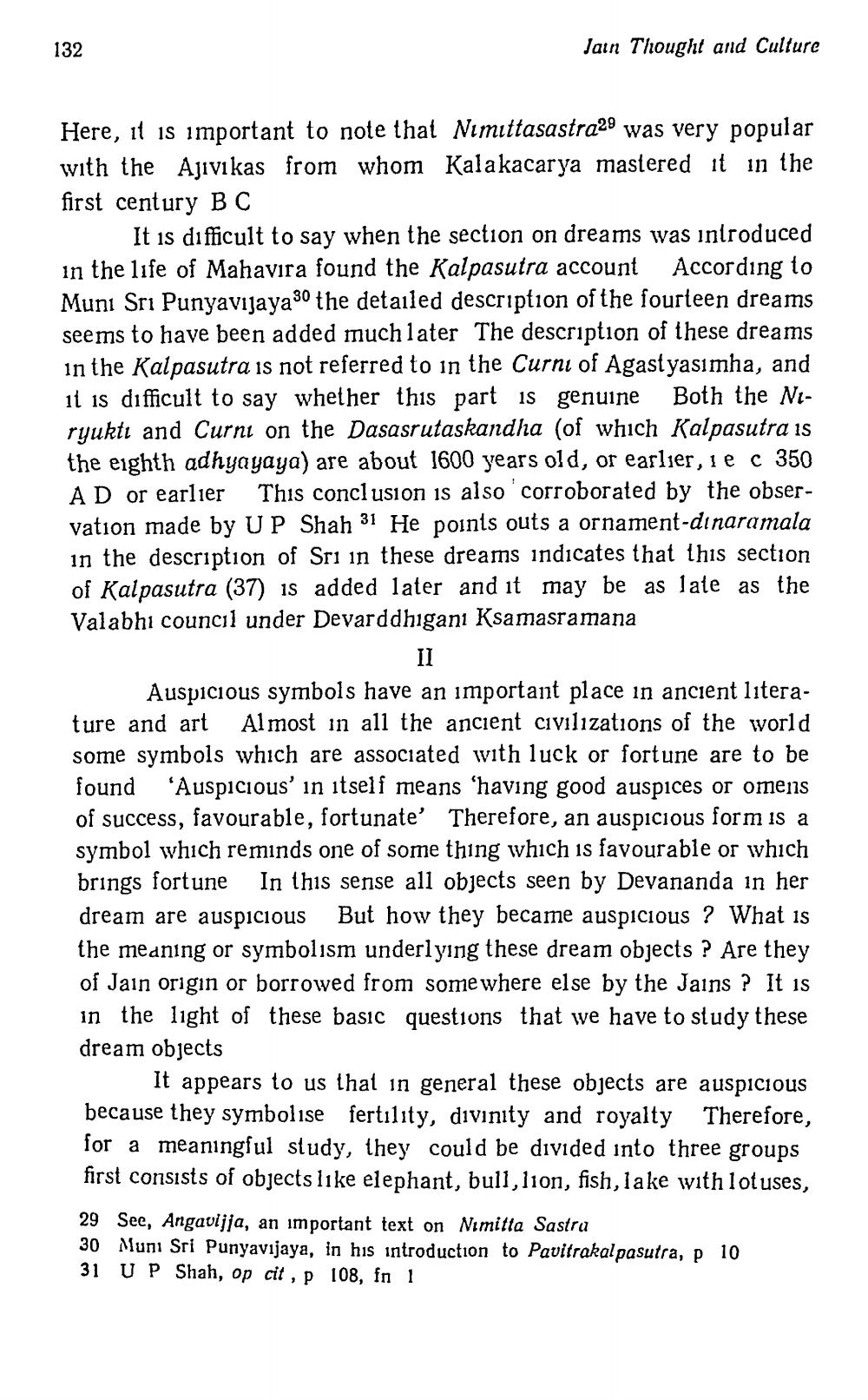________________
132
Jain Thought and Culture
Here, it is important to note that Nimittasastra29 was very popular with the Ajivikas from whom Kalakacarya mastered it in the first century BC
It is difficult to say when the section on dreams was introduced in the life of Mahavira found the Kalpasutra account According to Muni Sri Punyavijaya30 the detailed description of the fourteen dreams seems to have been added much later The description of these dreams in the Kalpasutra is not referred to in the Curni of Agastyasimha, and it is difficult to say whether this part is genuine Both the Niryuktı and Curni on the Dasasrutaskandha (of which Kalpasutra is the eighth adhyayaya) are about 1600 years old, or earlier, ie c 350 AD or earlier This conclusion is also 'corroborated by the observation made by UP Shah 31 He points outs a ornament-dınaramala in the description of Sri in these dreams indicates that this section of Kalpasutra (37) is added later and it may be as late as the Valabhi council under Devarddhigani Ksamasramana
II Auspicious symbols have an important place in ancient literature and art Almost in all the ancient civilizations of the world some symbols which are associated with luck or fortune are to be found 'Auspicious' in itself means 'having good auspices or omenis of success, favourable, fortunate' Therefore, an auspicious form is a symbol which reminds one of some thing which is favourable or which brings fortune In this sense all objects seen by Devananda in her dream are auspicious But how they became auspicious ? What is the meaning or symbolism underlying these dream objects ? Are they of Jain origin or borrowed from somewhere else by the Jains ? It is in the light of these basic questions that we have to study these dream objects
It appears to us that in general these objects are auspicious because they symbolise fertility, divinity and royalty Therefore, for a meaningful study, they could be divided into three groups first consists of objects like elephant, bull, lion, fish,lake with lotuses,
29 See, Angavijja, an important text on Nimitta Sastra 30 Muni Sri Punyavijaya, in his introduction to Pavitrakal pasutra, p 10 31 U P Shah, op cit, p. 108, fn 1




